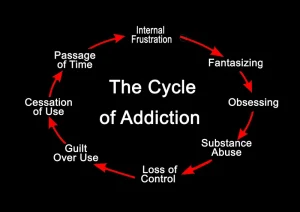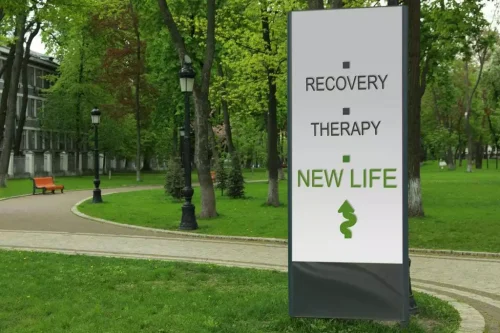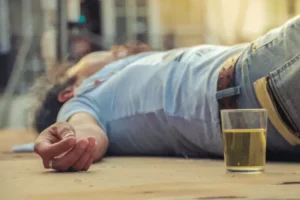Sober living
PTSD and Alcoholism: How Does Alcohol Affect Post-Traumatic Stress Disorder?

The perpetrator may emotionally manipulate the person or take advantage of someone who is asleep, drugged, unconscious, or under the influence of drugs or alcohol. Sexual assault is any type of sexual activity that takes place against the will of a person involved. It can include things like being grabbed or touched, as well as intercourse, being forced to perform sex acts, oral, or anal sex. All kinds of people can suffer sexual assault, no matter their gender, sexual orientation, race, ethnicity, or age. To read about sexual assault of Service members specifically, go to Military Sexual Trauma. Learn about sexual assault in adults, including facts that counter false beliefs about it.
Selective prevention strategies
- Explaining your decision to friends is a vital step in your journey towards a more empowered, healthier you.
- However, some research has examined the prevention of PTSD or AUD separately in this population, which could inform the prevention of comorbid PTSD and AUD.
- A large survey called the National Intimate Partner and Sexual Violence Survey (NISVS) reports that about 4 out of 10 women and 1 out of 4 men have experienced some kind of sexual violence in their lifetime.
- Women affected by PTSD are more likely to use alcohol after the trauma experience, whereas men seem to be more likely to use other substances.
- Between 60–80 percent of Vietnam veterans report alcohol issues when seeking treatment for PTSD.
Kirsty Mulcahy is a compassionate transformational life coach with a special focus on helping individuals embrace the beauty of an alcohol-free existence. Kirsty is not just a coach; she’s the visionary founder and dedicated Managing Director of SoberBuzz Scotland CIC. Breaking the cycle of Alcohol Usage Disorders and https://ecosoberhouse.com/ PTSD requires acknowledging the problem and seeking help. By shedding light on the hidden link between Alcohol Usage Disorders and PTSD, we can guide individuals towards healthier choices and a brighter future. If you’ve decided to take a break from drinking, it’s wise to adapt your social activities accordingly.
- Three hundred and fifty three women receiving standard community treatment as usual were randomized to 12 twice-weekly sessions of SS or WHE.
- Along this transformative path, you will acquire essential life skills and tools to effectively manage your emotions and confront life’s challenges without relying on alcohol as a crutch.
- This risk is even higher for those who have had more than one traumatic event, have substance abuse problems, or who have symptoms of depression or PTSD.
- Other key concepts include anticipating dangerous situations, setting boundaries, anger management and affect regulation.
Treating Co-Occurring PTSD and AUD
Further, women are more likely to experience a traumatic experience due to disproportionately being affected by domestic violence, sexual abuse, and sexual assault. Women affected by PTSD are more likely to use alcohol after the trauma experience, whereas men seem to be more likely to use other substances. Several comments about methodologic challenges in conducting these studies should be highlighted. The first issue is how to handle providing treatment of multiple psychiatric disorders in a safe and ethical manner. Most of the studies provided treatment for both disorders using either a combination of medications (Petrakis 2012) or a medication plus a psychosocial intervention (Brady et al. 2005, Foa et al. 2013, Hien et al. 2015). In the Brady study, the psychosocial intervention was provided to all participants to treat addiction and the Hien study provided all participants an integrated treatment to address both PTSD and AUD.
PTSD and associated factors
Other key concepts include anticipating dangerous situations, setting boundaries, anger management and affect regulation. SS was compared to relapse prevention in a community sample of 107 women with SUDs and either PTSD or sub-threshold PTSD (Hien et al., 2004). Women were randomized to one of the two interventions and individual sessions were delivered twice weekly for 12 weeks. Compared to a nonrandomized community ptsd and alcohol abuse care group, both treatment interventions had improved substance use and PTSD severity outcomes at the end of treatment, and at 6 and 9 months follow-up. Of note, PTSD symptom severity scores as measured by the CAPS were still in the moderate severity range (score range 48–60) post treatment, and no significant differences in PTSD or SUD symptoms between the SS and relapse prevention groups were observed.

Your therapist or general practitioner might have information about local resources. When trauma occurs earlier in life, the risk for substance use issues increases. Additionally, the more traumas a person has experienced, the more likely they are to develop issues with substances.
- Treatment programs need to incorporate interventions that address these dissociative symptoms.
- Through many decades, despite numerous definition changes for each, AUD and PTSD consistently co-occur.
- Therefore, the interaction of co-occurring disorders is important to consider in otherwise heterogeneous psychiatric patient populations.
- If a loved one is experiencing co-occurring PTSD and alcohol use disorders it is important to know how to get them the treatment they need.

A diagnosis of alcohol dependence required the first two criteria of alcohol abuse, along with indications of tolerance (the need to increase the amount of alcohol to achieve the desired effect) or withdrawal (the development of physical symptoms after reducing or discontinuing alcohol consumption). If you were sexually assaulted and are having symptoms that trouble you, speak with a health care provider or mental health professional. A local rape crisis center or victim services agency should be able to refer you to a mental health provider who can help. Depending on the type of problems you are having, a number of therapies may be helpful to you. One of the studies reviewed was based on sub-group secondary analyses that were not the study’s original focus (Petrakis et al. 2006) and another was a 4-week inpatient study in which PTSD symptoms, but not alcohol consumption, were evaluated (Kwako et al. 2015).
- Importantly, analyses can be conducted on the risk for the exposure to an event among the entire population, and then among those who experienced an event.
- Although preliminary, initial findings demonstrate COPE’s ability to produce significant and sustained symptom reduction, and lend support for the acceptability and tolerability of the COPE treatment among a Veteran population (Back et al., 2012).
- But, unfortunately, sometimes traumatic events in childhood can negatively impact a person’s sense of safety and belonging.
- It’s a good practice to keep this list at the back of a notebook, allowing you to add to it over time.
- Anyone who experiences negative consequences due to alcohol use deserves support and the opportunity to make positive changes.
- No matter the issues that someone who has been through sexual assault is dealing with, help is available.
PTSD and Alcohol Abuse in Veterans
Although preliminary, initial findings demonstrate COPE’s ability to produce significant and sustained symptom reduction, and lend support for the acceptability and tolerability of the COPE treatment among a Veteran population (Back et al., 2012). Research also documents high rates of comorbid PTSD/SUD among Veterans (Centers for Disease Control and Prevention, 1988; Shipherd, Stafford, & Tanner, 2005). A recent study (Petrakis, Rosenheck, & Desai, 2011) using national administrative data from the Department of Veterans Affairs indicated that, among Veterans who had served in Vietnam era or later, almost half (41.4%) with an SUD were dually diagnosed with PTSD.
Post-Traumatic Stress Disorder (PTSD) and Alcohol Addiction
Seven institutions were rehabilitation centers operating on non-pharmacological methods of care and one was a tertiary hospital. One of the rehabilitation centers exclusively served women, while the remaining centers, accepted only male patients. The hospital would receive patients with acute and chronic physical problems related to heavy drinking, whereas, the rehabilitation centers were often used by self-motivated users or their family to achieve abstinence using nonpharmacological methods. The rehabilitation centers were comparable in terms of user fees, and treatment modality. However, the hospital-based patients were likely to have different physical health profiles than patients recruited from the rehabilitation centers. The participant recruitment procedure and the participant characteristics from the original study have been published previously [38, 40].
Conditional disorders

Treating these conditions simultaneously has been challenging and complex in the general population, and military service adds additional risk factors for the likelihood of their onset and maintenance. Although promising interventions exist, more research is needed to assess the degree to which current interventions are effective for service members and veterans. Also, new interventions that target this population should be developed and tested. Recommended pharmacotherapies include acamprosate, disulfiram, naltrexone, and topiramate. Treatment availability and patient preferences are considerations when selecting a treatment.


